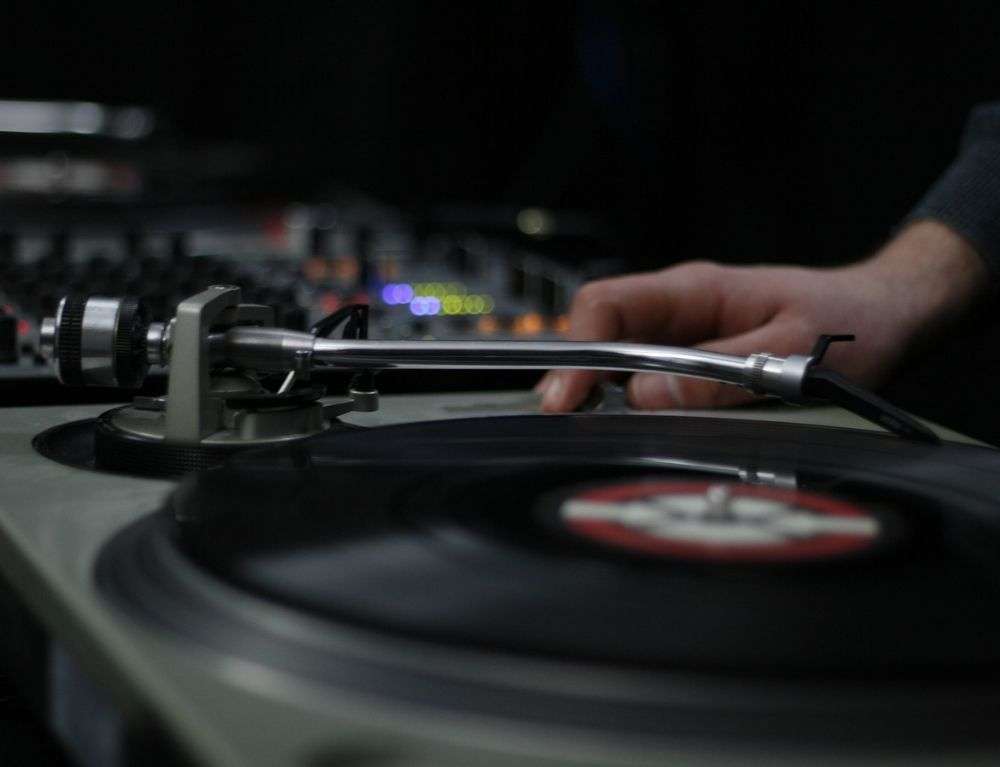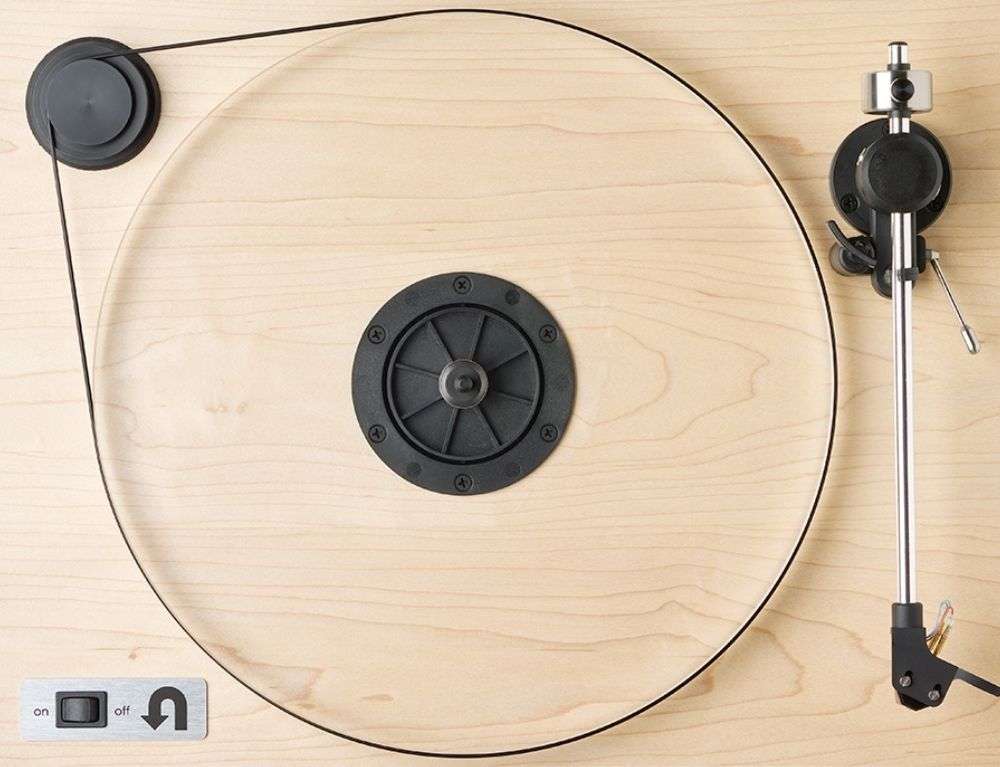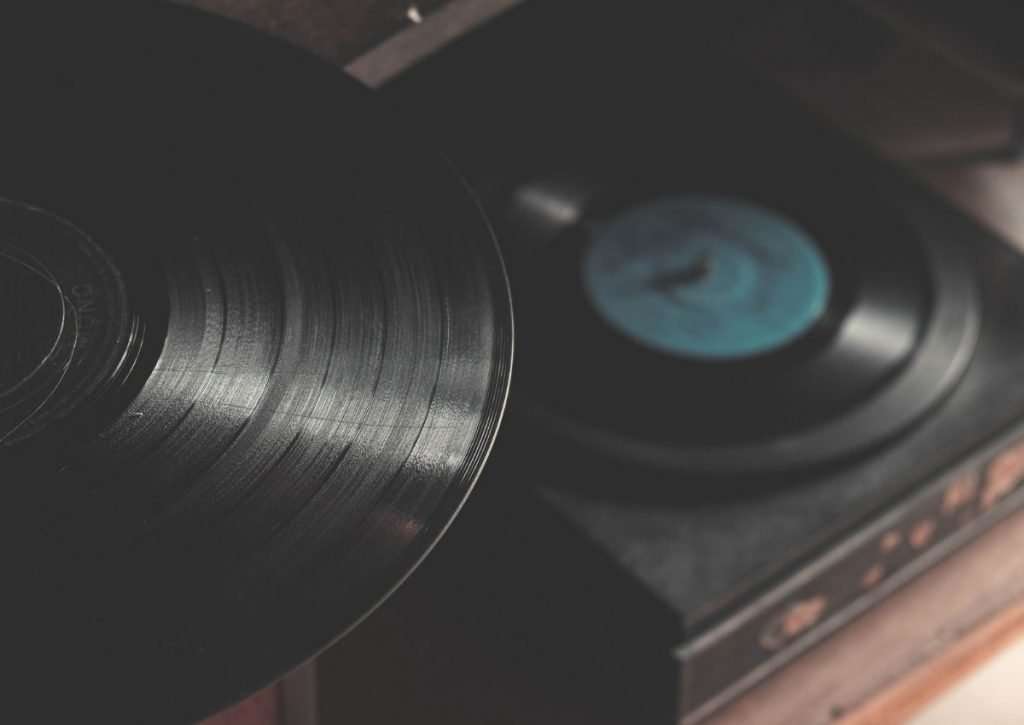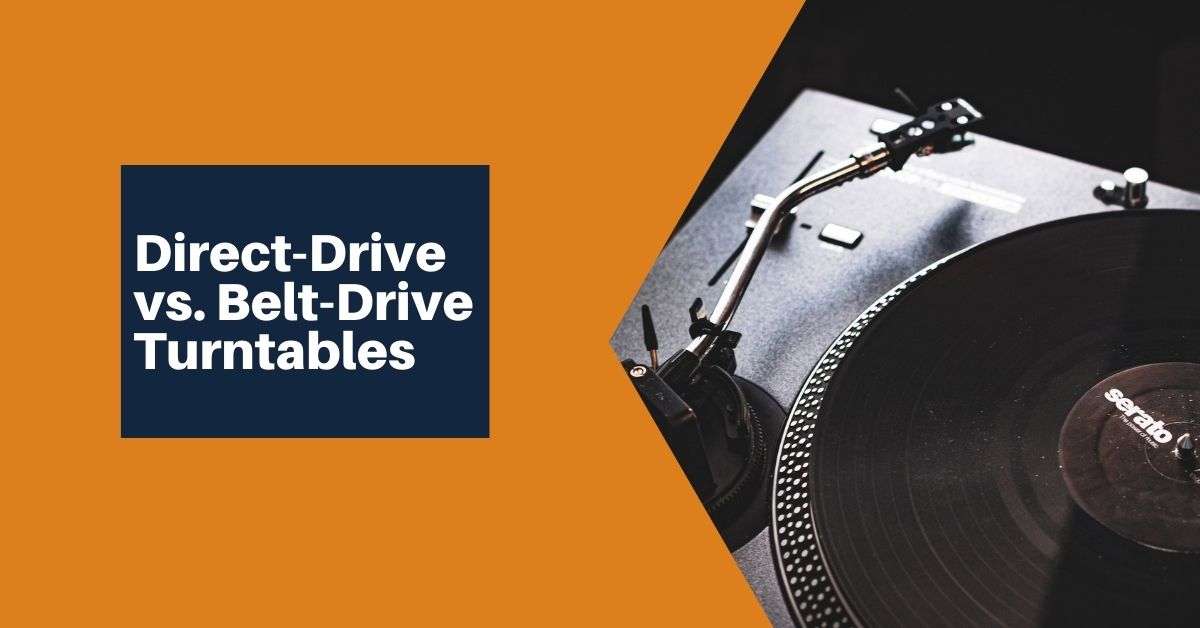Perhaps you’re just getting started in the world of vinyl (if so, welcome!). Or, maybe you’ve had the same turntable for a while and are looking to invest in a high-quality upgrade. Furthermore, perhaps you’re transitioning into DJing and want the best model for performing.
These are all excellent reasons to revisit the age-old question of which is better: a belt-driven turntable or a turntable that uses direct drive? Below we’ll consider the main differences and advantages of each type.
How Does a Direct-Drive Turntable Work?

Direct-drive turntables are powered by a turntable motor that lies underneath the platter. This spins the platter without a physical prop like a belt.
The direct drive from the motor helps it get up to speed straight away, which is a huge advantage for DJs. They’ll experience perfect pitch from the get-go because of this speed stability. Some home users also prefer it because of its quick operability and high torque. Direct-drive turntables get up to speed almost instantly
The direct-drive motor also allows the platter to keep spinning after you switch the record player off, meaning you can play the record in any direction without meeting resistance, making it an obvious choice for DJs.
A direct-drive turntable differs from a belt-driven model in that the latter type has a belt that provides friction, which slows the platter down when the power turns off.
How Does a Belt-Drive Turntable Work?

Many vinyl lovers deem the belt drive as the classic model.
This type uses a rotating rubber belt to spin the platter. The belt drives a motor that sits away from the platter rather than beneath it. The belt then wraps around the outside edge of the platter and spins when the power is on.
This setup means that friction influences the spin, unlike with a direct-drive model. When you turn the power off, this friction will cause the platter to stop spinning fairly quickly.
Likewise, the start-up is slightly slower because the belt may take a few seconds to reach full speed. However, this interval is generally shorter than the time it takes for the stylus to connect with the record.
Because this type of table will experience ample friction, the belt will wear out over time. Don’t worry, though: belts are easy to replace and very cheap to acquire. However, some users prefer direct-drive models for this reason.
So now you know the mechanics, what are the advantages and drawbacks of each system? Let’s talk pros and cons of direct- vs. belt-drive turntables.
Direct-Drive Turntable Pros
Explore some of the benefits of this type of record player:
Speed Control
One of the great advantages of these models is that they allow you to control record speed. DJs appreciate this ability, as it means that when they’re working with two turntables, they can blend one song into the next by decreasing or increasing the speed appropriately. For this reason, direct-drive turntables are the best choice if you’re looking to perform music with a larger setup.
An Immediate Start
The rotation on these models is powered directly by electricity, meaning the higher torque can get it up to speed straight away — there’s no risk of a slightly out-of-tune fade-in.
Again, this capability offers much greater control if you’re using your player for DJing. It’s also preferred by some home listeners who would rather hear the music start at the perfect pitch.
Spinning When the Power Is Off
Spinning is a huge part of DJing, and the ability to freely spin a vinyl record in either direction when the power is off is advantageous. This isn’t possible on a model that uses a belt, as it would create friction against the belt. This friction can damage the belt and the turntable motor.
Direct-Drive Turntable Cons
Curious as to why some people stay away from direct-drive turntables? Check out some of these products’ disadvantages:
Increased Vibration
Vibration is something you want to avoid when listening to music at home. Direct-drive variants use a motor directly under the platter, which means that some motors can cause the platter to vibrate. The stylus can pick this up and create an unpleasant rumble that could damage your needle over time.
This problem isn’t so much of an issue if you’re DJing in a noisy club, but it’s undesirable for home listening.
Speed Consistency
The speed on these models is regulated by many electrical signals. This automatic regulation can cause minute changes in speed that affect the pitch of the audio. Perfect pitch is one of the reasons many audiophiles stick with vinyl and record players, but the small sound quality variations that a direct-drive machine produces can alter the pitch.
Belt-Drive Turntable Pros
Learn why some people are die-hard fans of belt-drive turntables:
Lower Vibration
As the motor sits away from the platter, there’s less of a chance that a belt-drive model will pick up vibration. This is an important feature of these players, which is why most high-quality belt-drive turntables also come with a heavy platter to minimize the risk of vibration and increase the quality of sound reproduction.
The Classic Feel
There’s just something majestic about these players. The distinctly analog feeling of the belt can add to your enjoyment of the music and the experience. High-quality models also typically have gorgeous designs — the manufacturers know how much aesthetics can matter, even to audiophiles.
Accurate Speed Consistency
Unless the belt is seriously worn down, these machines will play at an incredibly consistent speed. The audio’s pitch will remain smooth throughout your session, which is exactly the sound quality home users desire.
Belt-Drive Turntable Cons
Consider the potential drawbacks of this type of record player before you go out and purchase one:
Quality Differences
There’s a bigger difference in playback quality between high-quality belt-driven turntables and budget options than there is between cheap and mid-range direct-drive variants. If you prefer the belt-driven types, you’ll want to invest in a model with a heavy platter and a strong motor. Be prepared for it to cost a bit more.
Can’t Spin When the Power Is Off
Most home listeners won’t mind this drawback. But if you’re used to DJing, you’ll have to remember not to try spinning a vinyl record when the power is off. If you act on this temptation, you may damage the belt and motor.
Verdict — Choosing Between Direct-Drive & Belt-Driven Turntables

Each type of record player has advantages. In general, we’d recommend direct-drive turntables for DJing, as they enable a more active approach to using a record player. The ability to spin freely and fade the speed between two platters is especially advantageous. Direct-drive turntables are also a great “beginner” option, as cheaper options tend to function very reliably.
Meanwhile, belt-drive turntables are what we might consider “the best at their best.” A high-quality belt-powered model is a thing of real beauty. The audio quality and consistency it provides are unparalleled, and its design tends to be extremely attractive.
If you have the money to invest in a high-quality belt-driven record player, we’d say it’s a purchase that you’ll never regret.
In truth, we can’t say that either one is “better” than the other. Both exist for good reasons and provide excellent sound quality. You’ll discover which suits you best on your journey as a vinyl lover.
There are different options for every price point. Take a look at our $200 and $500 turntable buying guides to make the right choice based on your preferred sound system setup — we promise that you’ll find something to love.

Lead Editor / Owner
After beginning his career in the video and audio recording industry, Andrew started HiFi Hippo to share his knowledge and passion for vinyl and vintage audio with other readers.
